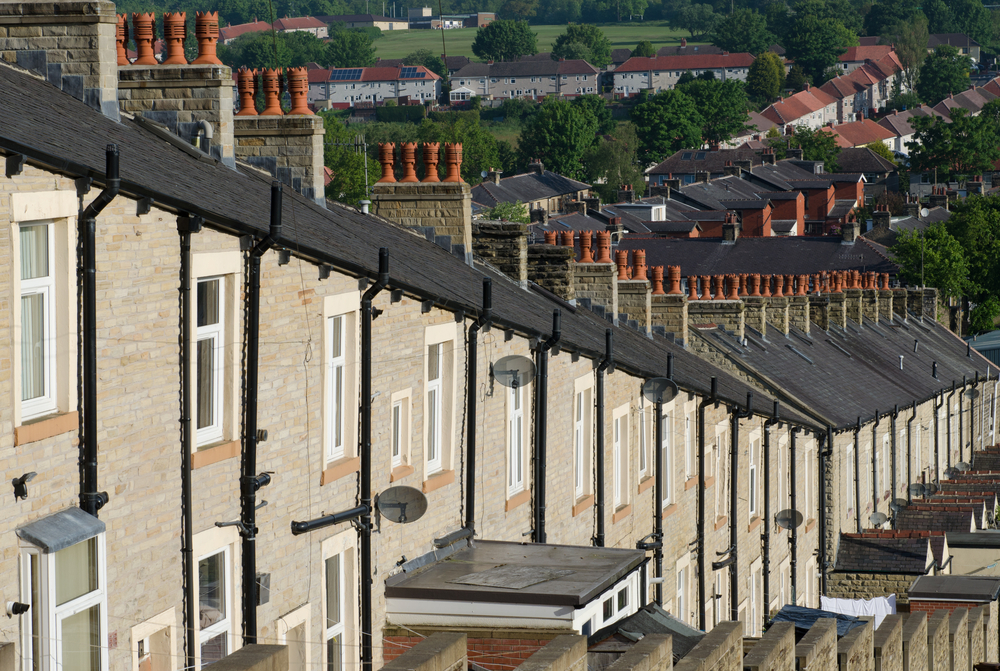As net zero commitments and energy efficiency become more urgent, green mortgages are getting an increasing amount of press, industry and consumer attention. UK housing stock is responsible for around 20% of the country’s total greenhouse gas emissions, so reducing the carbon footprint of homes will be a critical part of achieving our national net zero commitment. The number of green mortgages available has grown from a handful in 2019, to over 50 products from more than 30 lenders at the last count, representing progress and good intentions from the mortgage industry.
The retrofit funding opportunity
However, the impact of current green mortgage products is minimal, typically offering either a small discount or cash back for properties that already have a good energy efficiency (EPC) rating, or funding carbon-efficient new-build. Specialist lenders like Ecology Building Society fund large green renovations or conversions. However, this only addresses a fraction of the total housing stock.
While a positive step, current green lending products reward customers who are already energy efficient, but do not help with the hard and essential work of improving the carbon footprint of inefficient homes. The big challenge, and the government’s headline target, is to move all homes to a minimum EPC rating of C by 2030. This will require investment in energy efficiency improvements by homeowners, landlords and housing authorities – installing existing properties with insulation, heat pumps and renewable energy systems such as solar panels.
The UK Committee on Climate Change estimates that £250bn needs to be invested in UK home upgrades by 2050, creating a significant market for retrofit funding. However, consumers are still mostly unaware – recent research by MAB suggested two thirds of home-owners are unaware of the government’s target, and in most cases also do not know the EPC rating of their property. Furthermore, the government’s flagship Boiler Upgrade Scheme has been described as “seriously failing” by a House of Lords inquiry.
Creating the conditions for change
Some lenders including Halifax, NatWest, Aldermore, and Co-op have introduced content and tools to help homeowners understand how they can improve the carbon footprint of their properties. Skipton and Santander have gone a stage further by offering their customers free energy-efficiency improvement reports. Other companies including decarbonisation concierge Genous.earth offer free online assessments and retrofit support. These initiatives will help to raise consumer awareness, and provide motivated customers with actionable steps towards de-carbonisation. However, the improvements still need to be delivered and paid for, and there is little help for customers in these crucial areas.
Customers need access to trained retrofit professionals. Currently, the supply chain of contractors to carry out improvements does not have enough capacity. It is estimated that we would need 90,000 trained installers to hit UK government heat pump targets – there are currently around 3,000. Furthermore, for lenders and customers to be confident that the improvements are effective, there will need to be standards of assurance for the work done and the resulting energy efficiency gains and carbon impact.
Clearly, government has a part to play, and the Green Finance Institute has called for the government to clarify its intentions regarding timelines for introducing minimum standards for energy efficiency and clean heat, including Reforming the Consumer Credit Act to support innovative green financial products.
Innovation opportunities
While government initiatives, retrofit contractor capacity and accreditation standards are all needed, they are outside the control of the finance community. However, there are many aspects of product innovation which lenders could be developing in the mean time. Here are some ideas for green lending innovation:
- Affordability assessment: investments in energy efficiency should pay back over time through reduced energy bills, although the payback periods may be longer than the usual mortgage term. Equally, improved properties should be worth more. Lenders could support customers to make the case for borrowing to invest in energy efficiency by factoring savings into affordability assessments, making borrowing easier.
- Expedited approvals: lenders could help reduce friction by streamlining approvals for green loans using straightforward eligibility rules around borrower status, home type and supply-chain accreditation, without all the requirements for a full mortgage.
- Green remortgages: remortgage is a great time to finance home improvements, including energy efficiency. Lenders could make it easier for customers to borrow to invest in retrofit improvements as part of their remortgage, offering attractive terms for additional borrowing used for carbon-reduction improvements.
- Green equity loans: some customers may want to make improvements outside their remortgage cycle or have an existing mortgage with a lender who can’t help with carbon reduction. Specialist lenders could offer second charge / equity loans specifically for the purpose of funding retrofit improvements. The market for Home Equity Lines of Credit (HELOCs) is already developing in the UK, and this vehicle could be harnessed to help fund retrofit.
- Energy partnerships: given that the benefit of efficiency improvements comes through reduced energy bills, energy companies should be natural partners for lenders. Some energy firms are already helping consumers to carry out improvements, with British Gas and Octopus Energy being leading heat pump installers. NatWest recently announced a pilot project with Centrica to retrofit social housing. Ultimately there could be offers for customers around the total cost of energy ownership, funding improvements over time through the energy bill.
- Property-linked finance: in the US, a system called Property Assessed Clean Energy (PACE) has mobilised $10bn towards energy efficiency measures. The loan is linked to the property rather than the owner and repayment obligations are transferred to the new owner when a property is sold. This means whoever is living in the property benefits from the energy efficiency measures. This may require a leap of faith and help from the government, regulators and the property industry but is already being piloted in Spain and elsewhere in the EU.
The way forward
If lenders are serious about carbon transition, they need to make it much easier for home-owners and landlords to borrow to fund carbon-reduction improvements. This introduces additional conduct and legal risks to underwriting considerations, so the government and regulators will need to play their parts. And lenders will need to work closely with the home energy supply chain to facilitate and assure the installation of the different technologies needed, and the ensuing energy bill reductions.
It is a tall order, however as an industry we cannot wait for conditions to be perfect before starting to make progress. There is no shortage of opportunities to innovate, and while partnership with the government, regulators and energy industry will be important, lenders can make a start.
Phil Rance is former mortgage director at Experian



